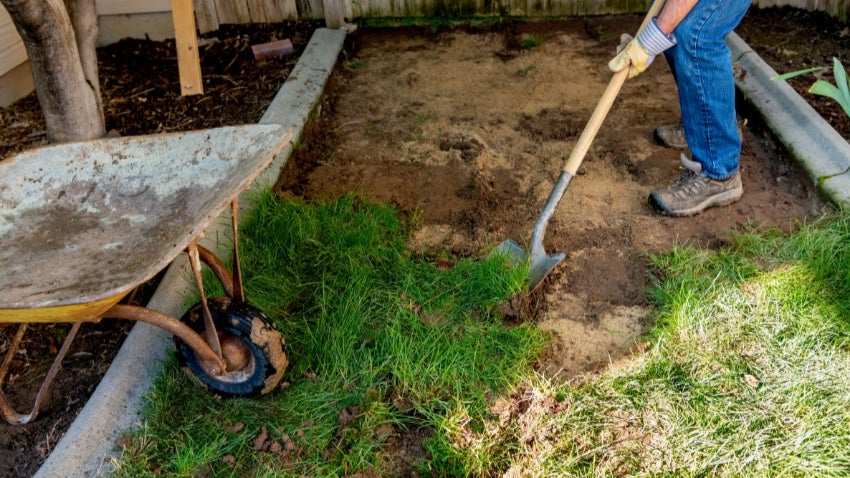
Summer is the best time to remove Bermuda grass. When its actively growing, products applied to the grass will also kill the underground root stems. Bermuda grass vigorously regrows from any vegetative parts not killed.
For best results, follow these steps:
- Water the lawn daily one week before applying herbicides to make the grass grow actively.
- Do not mow. The more grass or blade surface available allows more herbicide to be absorbed.
- Apply herbicide when the grass has a bright green color and is actively growing. Use herbicides containing glyphosate as the active ingredient. The best time to apply glyphosate is early to mid-morning. Grass will absorb the herbicide, taking it down into the roots. It’s not effective to apply herbicide to the soil. It can take a few days for 85% to 95% of the grass to be killed.
- Irrigate the grass a second time about one week after the initial herbicide treatment to stimulate regrowth of the surviving grass.
- Retreat the remaining grass.
Once you have successfully killed the grass, remove any dead grass remaining on the soil. If grass reappears, spot treat with a glyphosate containing product.
Most sprinkler systems are easily converted to drip systems with a few modifications. Remove existing sprinkler heads and install drip adapters on the risers. A pressure regulator and filter are also recommended.
| Spring is a good planting season; however, you may want to wait for fall to begin planting. Fall is the ideal time to plant in the Phoenix valley. The cooler fall temperatures allow trees and shrubs to convert their energy to root growth. Cooler fall temperatures help reduce the added stress and water needs when planting during warmer seasons. This can give you additional time to make plant selections and plan your landscape. |
Tips for Removing Your Grass






Before and After: Grass Removal to Xeriscape
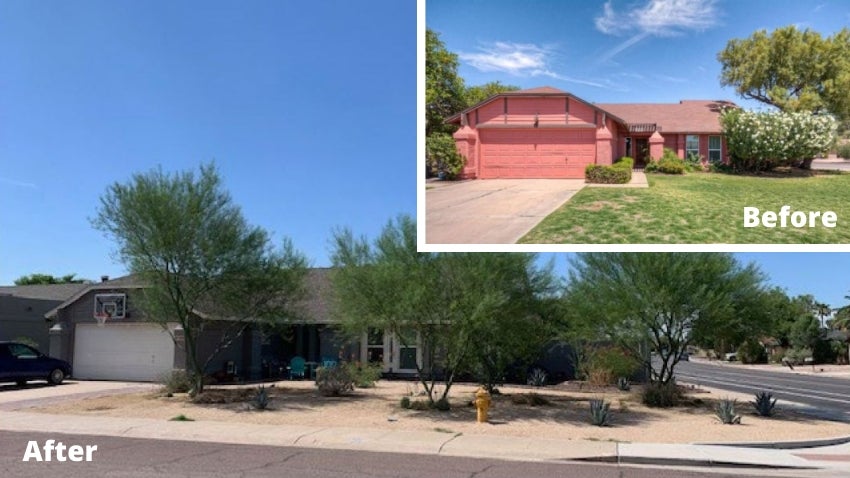
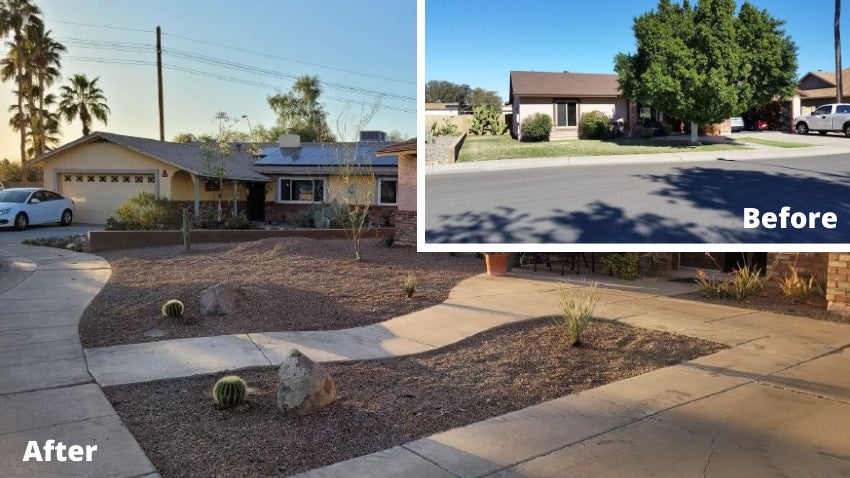
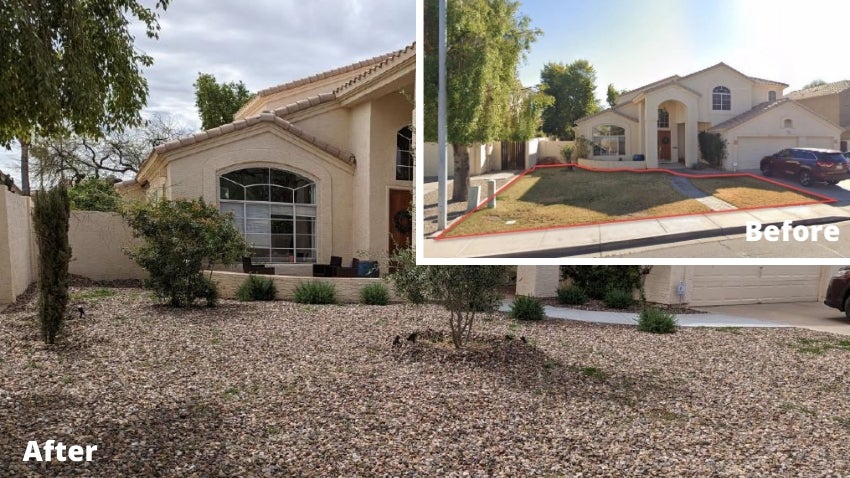
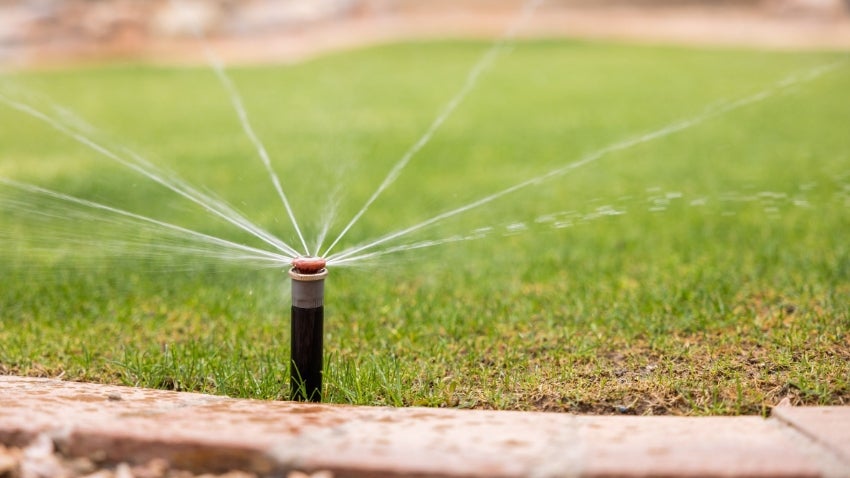
Why you should remove your grass
Every summer, residents with lawns increase their water use to maintain a green lawn resulting in higher monthly water bills. Lawns are one of the largest water consumers in a household. Bermuda and Bermuda-hybrid lawns require about 1.5-inches of water every week in the summer. That equals to more than 40-inches each year despite the months in winter dormancy.
Maintenance mowing, fertilizing, edging, dethatching, and aerating is also required when you have a lawn. Checking the sprinkler system weekly is also recommended to catch leaks or misaligned sprinkler heads. Whether you care for your lawn or pay someone else to, maintaining a lawn is costly and time consuming.
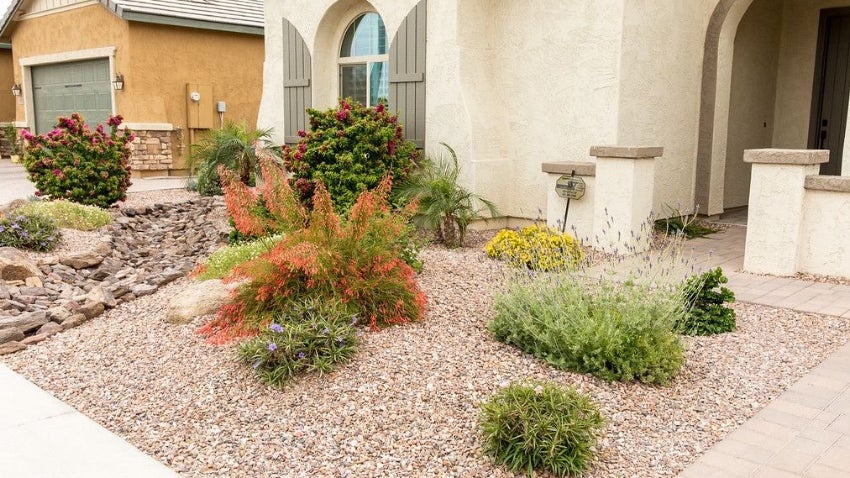
Converting to Xeriscape
Lawns use about two times as much water as a desert adapted, low water use landscape, also known as xeriscape. You’ll save money on maintenance and water by replacing your lawn with xeriscape.
The goal of xeriscape is to create an aesthetically appealing landscape with plants that provide shade for cooling, consume less water, and are useful for the native habitat. Xeriscape is not a barren rock landscape. It should be full of plants that are adapted to the Sonoran Desert. A xeriscape landscape can easily use 50% less water than a traditional landscape and requires little to no maintenance once established.
Plan and Design Your Low-Water Use Landscape
Water Wise Landscaping in Chandler includes a Garden Gallery with more than 30 categories highlighting front yards, back yards, patios, walkways, entryways, seating areas, and more. The Garden Tour features 24 distinctive landscapes, each with dozens of photos to help you solve your landscaping needs by showing local landscape combinations and solutions. You can also visit Landscape Plants for the Arizona Desert
Not sure where to start? Visit our Landscape Design page for tools and resources to help you design your perfect yard.



